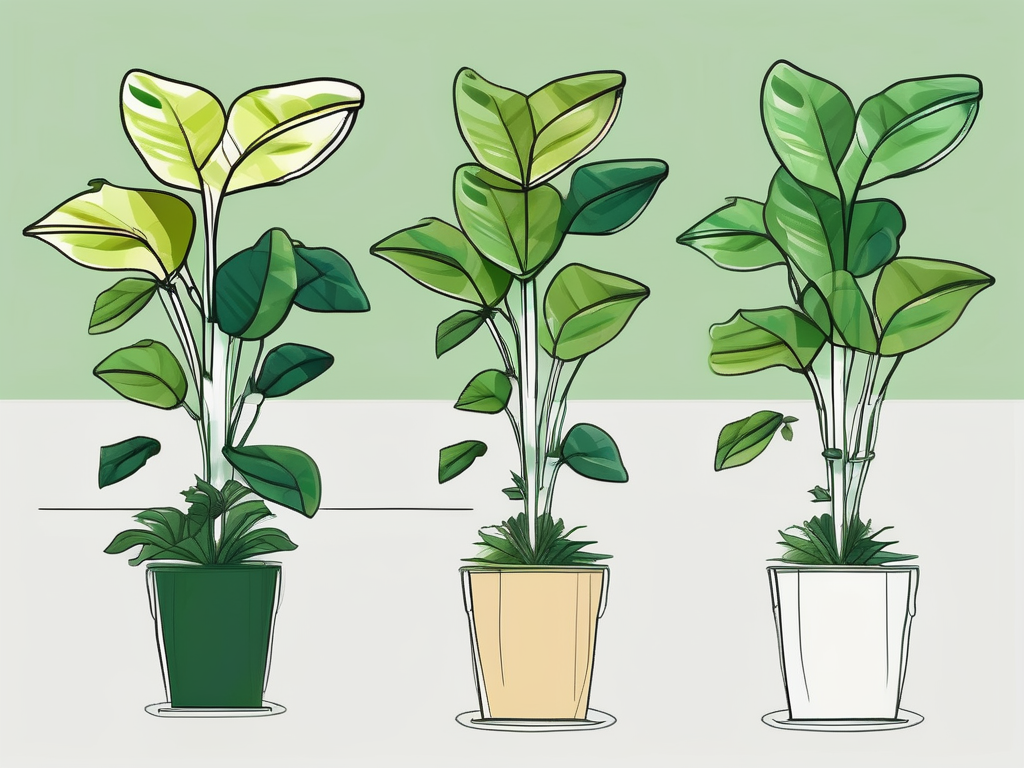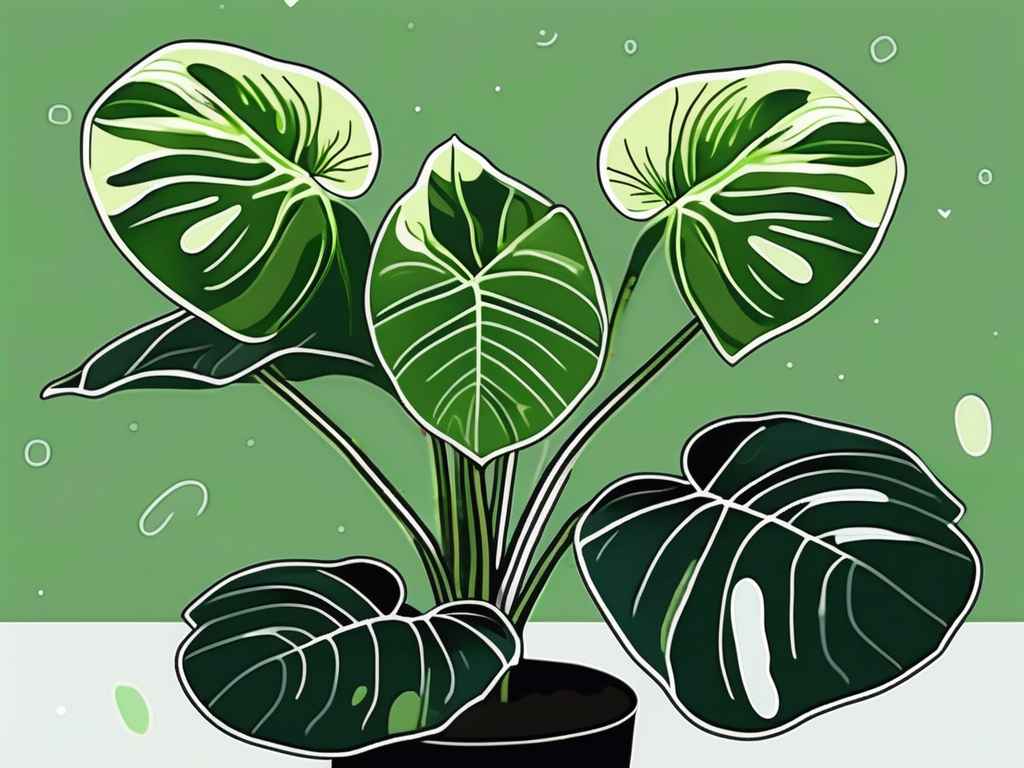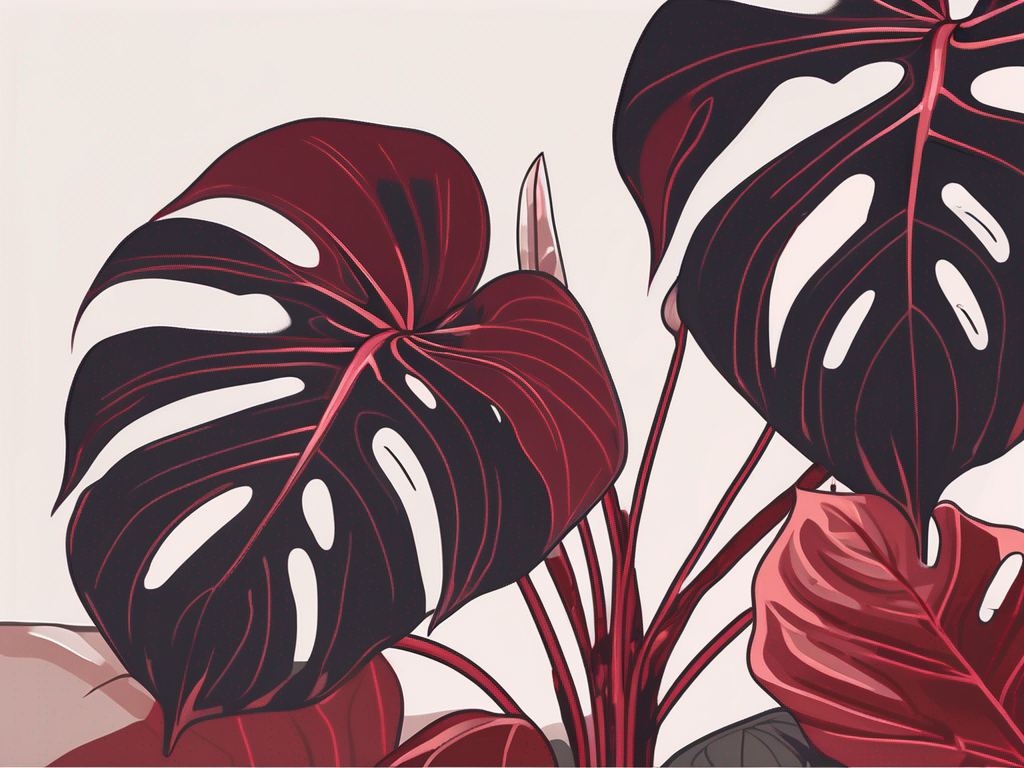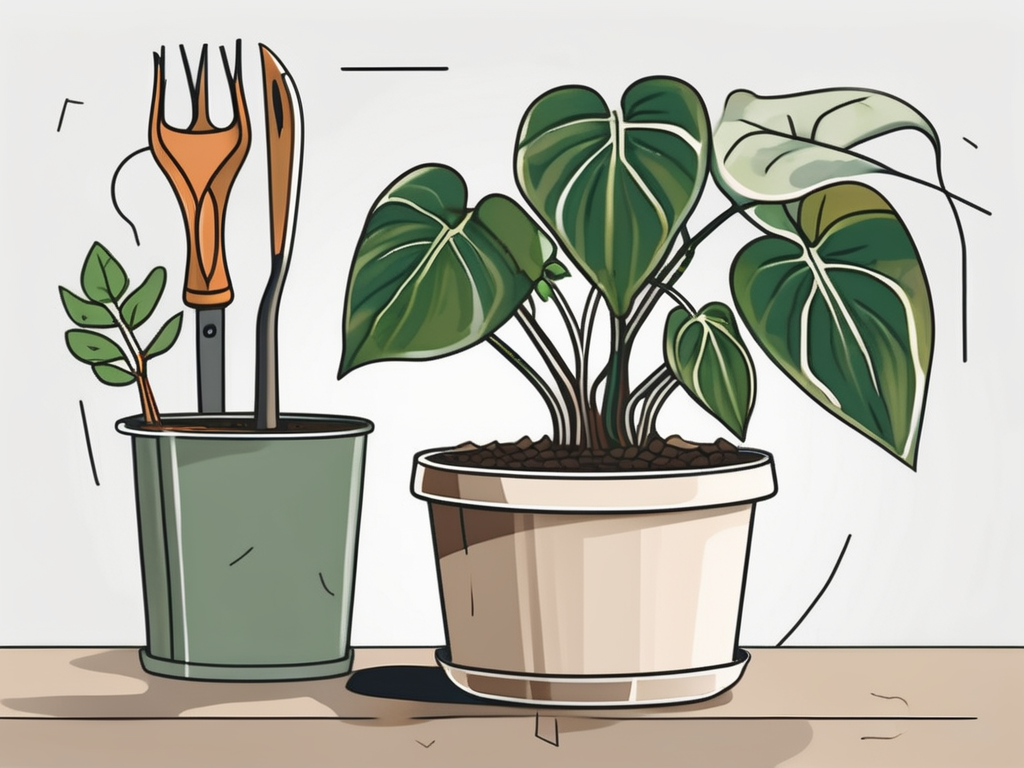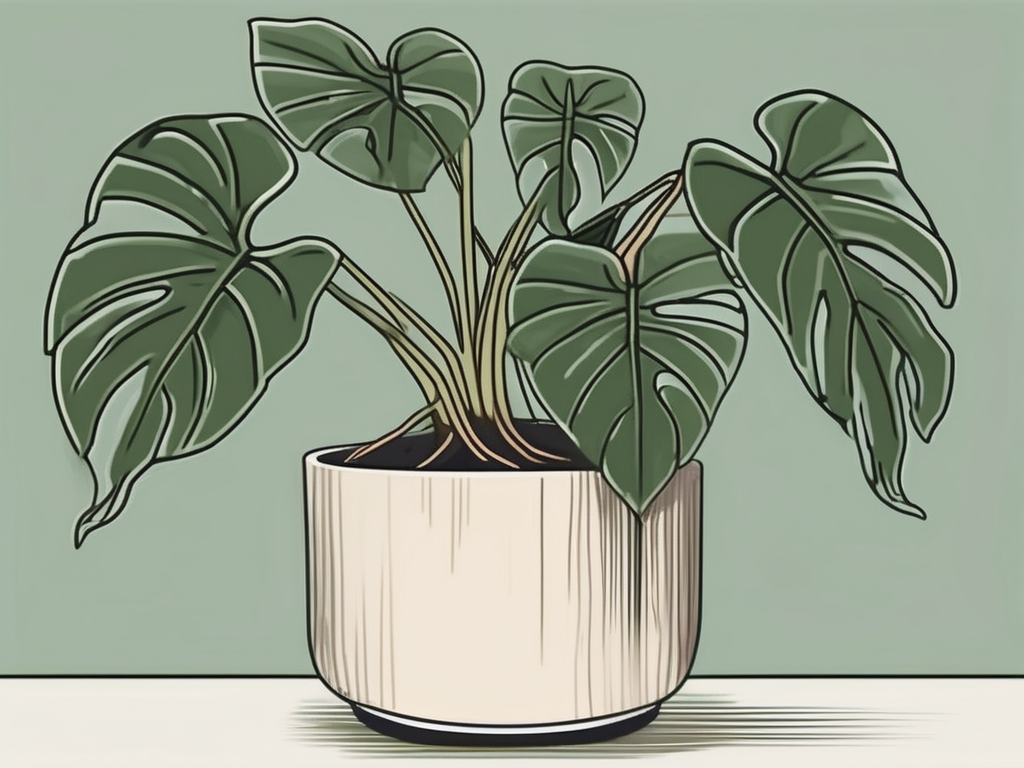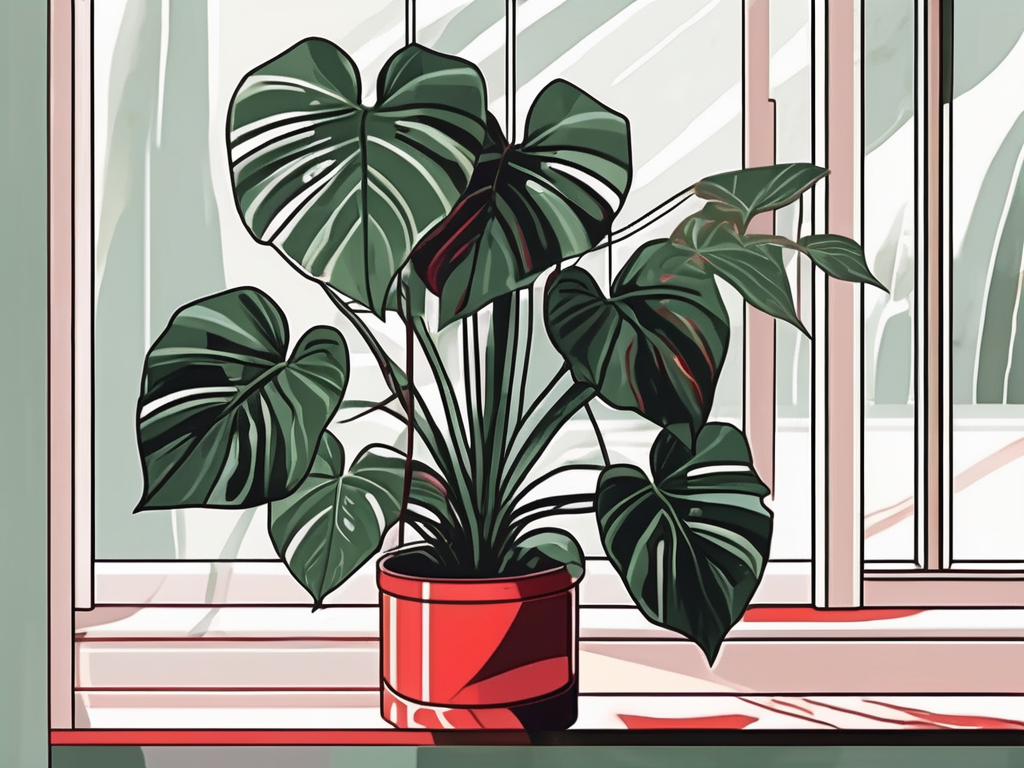
Bringing a Philodendron Imperial Red into your home is like adding a touch of the tropics to your living space. With its striking, deep red leaves and easy-going nature, this plant is perfect for both novice and seasoned plant parents. But how do you ensure this stunning plant thrives in your care?
In this article, we'll explore everything you need to know about nurturing your Philodendron Imperial Red. From light preferences and watering routines to tackling pesky pests, we've got you covered. Let's dive into the ins and outs of creating a perfect little jungle corner in your home.
Understanding Your Philodendron Imperial Red
The Philodendron Imperial Red is a hybrid variety known for its eye-catching foliage. Its leaves start with a reddish hue and gradually mature to a dark green, providing a beautiful contrast. This plant's compact nature makes it ideal for smaller spaces, yet it's bold enough to make a statement.
Interestingly, the Philodendron Imperial Red is part of the Araceae family, which includes other popular houseplants like Monsteras and Pothos. This means it's generally low-maintenance and forgiving, even if you don't have a green thumb.
To give your plant the best start, it's helpful to know its origins. Native to the rainforests of South America, it thrives in warm, humid environments. So, think about recreating a similar atmosphere in your home. Remember, a happy plant is one that feels at home!
Finding the Perfect Spot
Location, location, location! Just like real estate, the right spot is crucial for your Philodendron Imperial Red's happiness. While these plants are adaptable, they do have some preferences.
Philodendrons love bright, indirect light. Imagine the dappled sunlight filtering through a forest canopy—that's what your plant needs. Placing it near a north or east-facing window usually works well. Direct sunlight can scorch those beautiful leaves, so avoid that at all costs.
If your space doesn't have the ideal lighting, don't fret. These plants can tolerate low light conditions, although their growth might slow down. In such cases, consider supplementing with a grow light. It's like giving your plant a little boost of sunshine!
Mastering the Art of Watering
One of the most common pitfalls for plant parents is getting the watering routine just right. With Philodendron Imperial Red, it's all about striking a balance.
These plants prefer their soil to be consistently moist but not soggy. You don’t want to drown the roots, nor do you want them parched. A good rule of thumb is to water when the top inch of soil feels dry to the touch. Stick your finger in the soil—if it feels dry, it’s time for a drink.
In general, watering every 1-2 weeks should suffice, but always adjust based on your home’s humidity and temperature. During the winter months, you might find yourself watering less frequently. And remember, under-watering is easier to fix than over-watering. So, when in doubt, hold off for a day or two.
Choosing the Right Soil and Pot
The right soil and pot can make all the difference for your Philodendron Imperial Red's health. Think of it as setting the foundation for a sturdy house.
Philodendrons love well-draining soil. A mix designed for aroids or a general potting mix with added perlite or orchid bark is perfect. This ensures excess water drains away, preventing soggy roots and root rot.
When it comes to pots, ensure there are drainage holes. A pot without holes is a recipe for disaster, leading to waterlogged soil. If you fall in love with a decorative pot that lacks drainage, use it as a cachepot and keep your plant in a plastic nursery pot inside it.
Repotting every couple of years or when you notice the roots circling the pot will give your plant room to grow. This also refreshes the soil, providing a nutrient boost. While repotting, take the opportunity to check for any signs of pests or diseases.
Feeding Your Philodendron Imperial Red
Just like us, plants need the right nutrients to thrive. While Philodendron Imperial Red isn't a heavy feeder, a little fertilizer goes a long way.
During the growing season—spring and summer—feed your Philodendron with a balanced, water-soluble fertilizer every 4-6 weeks. This keeps the foliage vibrant and supports healthy growth. Always follow the instructions on the fertilizer package to avoid overfeeding, which can harm the plant.
In the fall and winter, ease off the feeding. The plant's growth slows down during these months, so it doesn't require as many nutrients. Think of it as giving your plant a break from its busy growth schedule.
Humidity and Temperature Considerations
Remember how we mentioned Philodendron Imperial Red hails from the rainforests of South America? This means it loves warmth and humidity.
Keeping your plant in a space with temperatures between 65°F and 80°F (18°C to 27°C) is ideal. While it can tolerate slightly cooler conditions, anything below 55°F (13°C) might cause stress.
Humidity is another factor to consider. Aim for a humidity level of 40-60%. If your home is on the drier side, especially in winter, consider using a humidifier or placing your plant on a pebble tray with water. Grouping plants together can also create a microclimate of higher humidity.
Pruning and Maintenance
Philodendron Imperial Red doesn't require much pruning, but occasional maintenance keeps it looking its best. Removing dead or yellowing leaves not only improves appearance but also redirects energy to healthier growth.
If your plant starts looking a bit leggy, don't be afraid to trim it back. Pruning encourages bushier growth, making your plant fuller and more vibrant. Use clean, sharp scissors or shears to make cuts just above a leaf node. This is where new growth will emerge.
Regular maintenance also means keeping an eye out for dust buildup on the leaves. Gently wiping them with a damp cloth not only keeps them clean but also improves photosynthesis.
Dealing with Common Pests and Problems
No plant is immune to pests, but keeping a vigilant eye can help you tackle issues before they become major problems. The most common pests for Philodendron Imperial Red are spider mites, aphids, and mealybugs.
Spider mites can be pesky, leaving tiny webs on the undersides of leaves. Aphids might cluster on new growth, and mealybugs appear as cottony patches. A gentle spray of water or a solution of insecticidal soap usually does the trick. Regularly inspecting your plant will help catch these early.
Besides pests, watch out for signs of overwatering and underwatering. Yellowing leaves might indicate too much water, while brown, crispy edges suggest a need for more moisture. Adjust your care routine accordingly to keep your plant thriving.
Incorporating Philodendron Imperial Red into Your Home Decor
Now for the fun part—styling your Philodendron Imperial Red! This plant's bold leaves make it a versatile addition to any room.
Place it in a decorative pot to complement your decor. The deep red and green foliage pairs beautifully with neutral tones, adding a pop of color. On the other hand, a sleek, modern pot can make the plant a focal point in minimalist spaces.
Consider placing your plant on a plant stand to elevate its status, or use it as a centerpiece on a dining table. Its compact size makes it perfect for shelves, desktops, or even hanging baskets. The possibilities are endless, so let your creativity flow!
Final Thoughts
Caring for a Philodendron Imperial Red is a delightful journey. From choosing the right spot to mastering watering, each step helps the plant thrive in your home. Remember to monitor for pests and adjust your care routine as needed.
At Cafe Planta, we believe in the power of plants to transform spaces and bring people together. Whether you're seeking advice or looking for unique additions to your plant collection, we're here to help. Connect with us on Instagram or reach out via email. Let's create beautiful, thriving plant collections together!
















